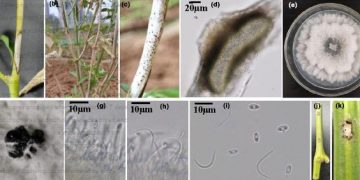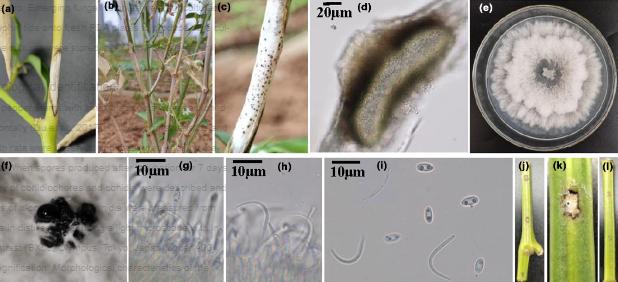Chilli pepper is one of the most important and widely cultivated pepper types in China. It has high nutritional and economic value. Capsicum frutescens L. is one of the chilli pepper types in production. In October 2022, a new disease showing blight of the entire chilli pepper plant was observed in Nanchang City, Jiangxi Province. The fungal isolates consistently obtained from the diseased samples were identified as Diaporthe caryae C. M. Tian & Qin Yang based on morphological characteristics, pathogenicity test and phylogenetic analysis of four genes, including internal transcribed spacer region (rDNA-ITS), translation elongation factor 1-alpha gene (TEF1), beta-tubulin gene (TUB2), and calmodulin (CAL). Although other Diaporthe species have been reported as pathogens of peppers previously, to our knowledge, this is the first report of D. caryae causing stem blight of pepper in the world. D. caryae was reported to be able to infect various fruit trees such as kiwifruit, peach, pear, and pecan, resulting in kiwifruit rot, peach constriction canker, pear shoot canker, and pecan dieback, respectively. The host range of D. caryae has expanded from fruit trees to vegetable crops.
Reference: Zhu, Q.-H., He, J.-P., Cheng, S.-Y., Yuan, X.-E., Liu, B., Song, S.-L., Jiang, J.-X., & Xiong, G.-H. (2024). First report of Diaporthe caryae causing stem blight of chilli pepper (Capsicum frutescens L.) in China. Journal of Phytopathology, 172, e13239. https://doi.org/10.1111/jph.13239































